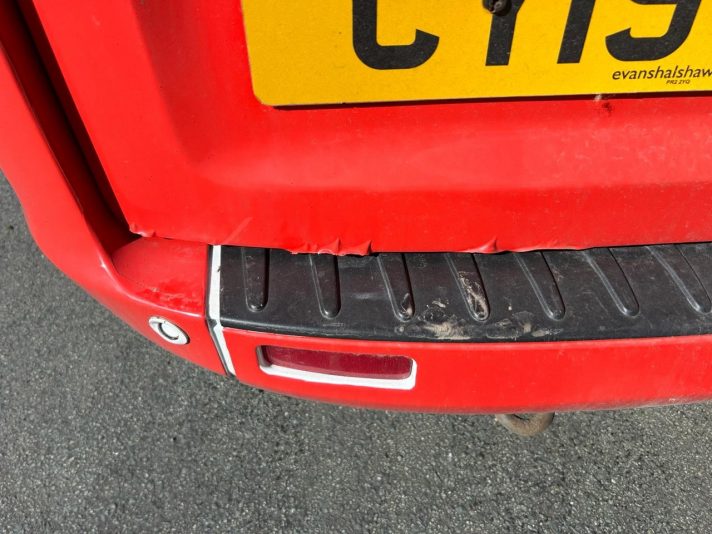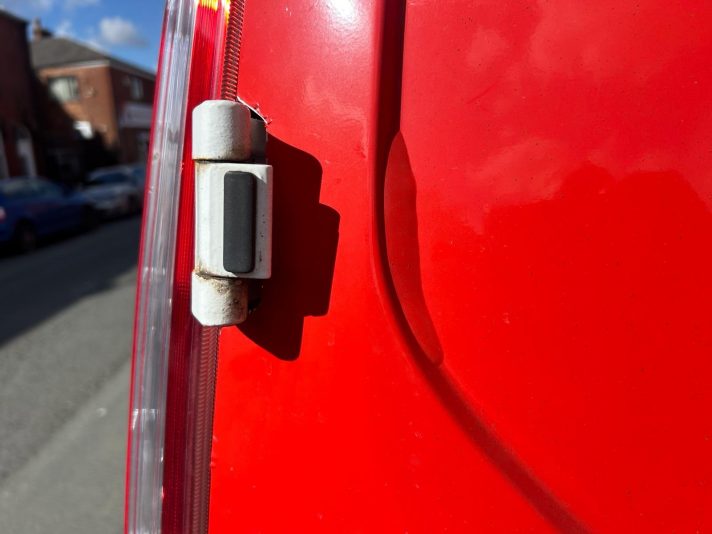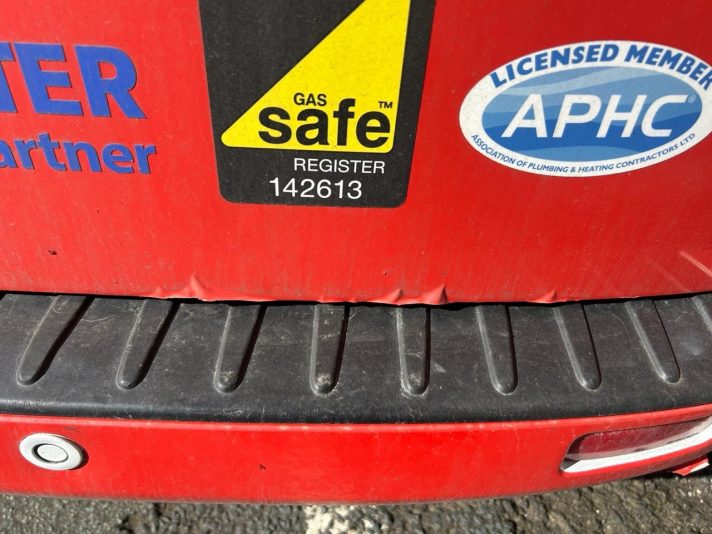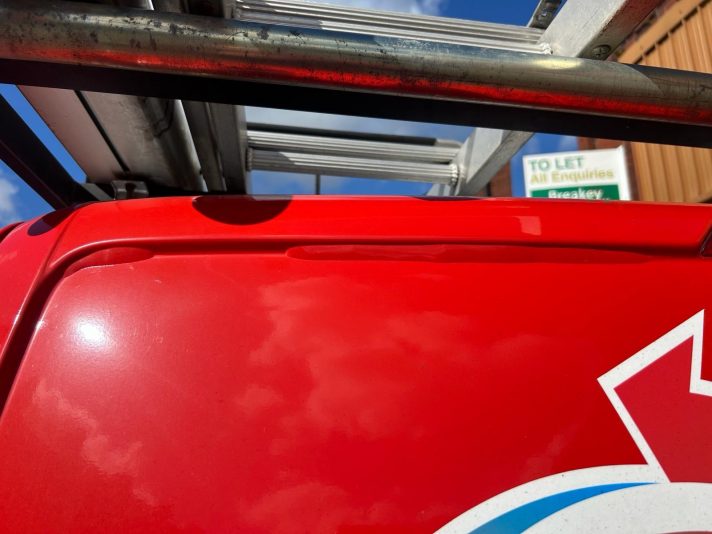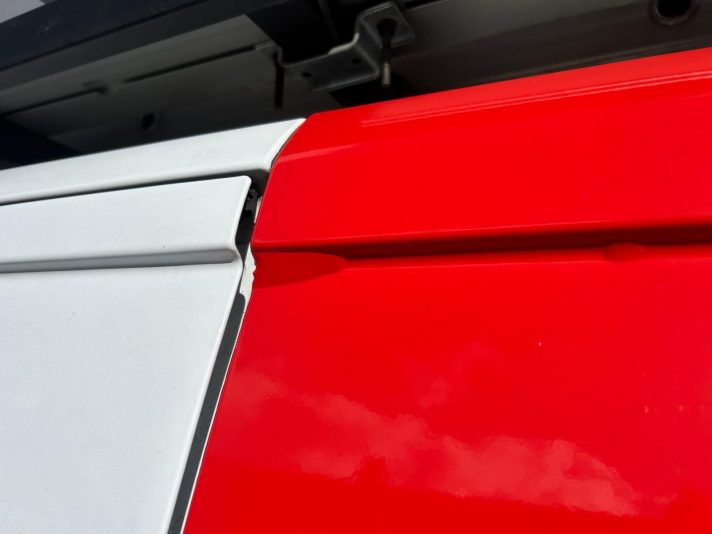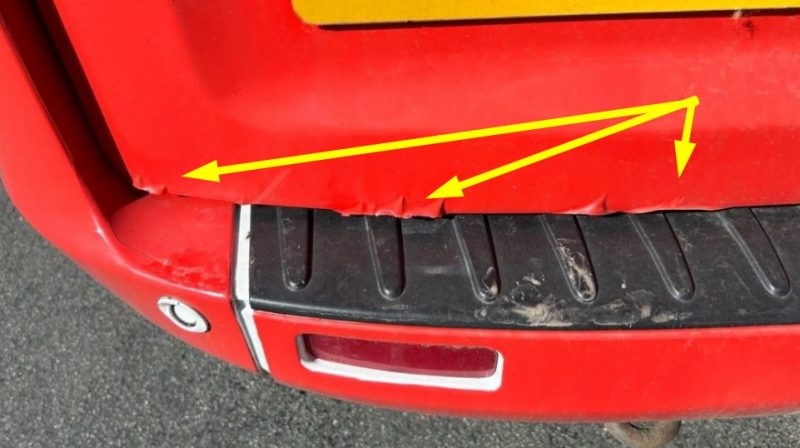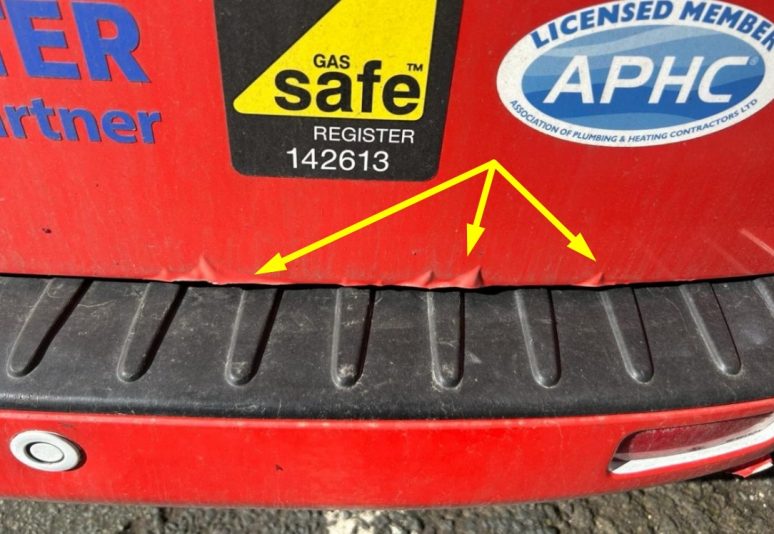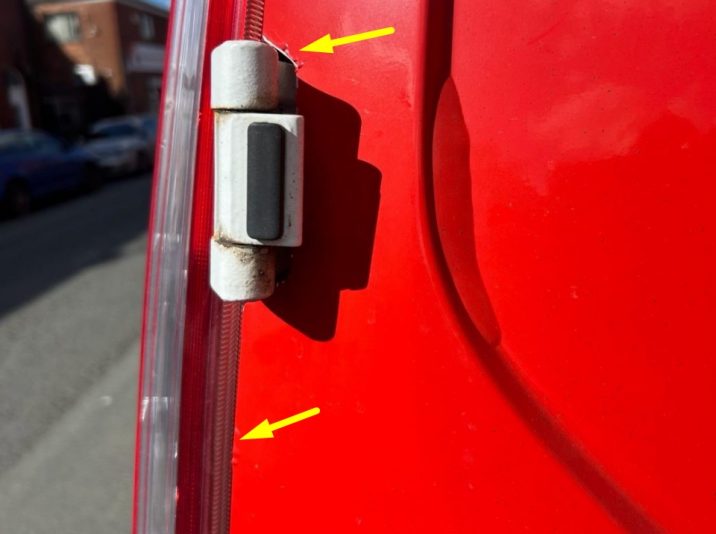Activity Feed › Forums › Sign Making Discussions › Vehicle Wrapping › Wrap Failure cause, views and opinions, please?
-
Wrap Failure cause, views and opinions, please?
Posted by David Hammond on March 18, 2024 at 1:42 pmBack in January I wrapped a transit with Avery Supreme, I had a subcontractor in giving me a hand.
Today the customer has sent me the following pictures. I’m in no doubt it’s an installation error, but before we redo the job, I need to confirm my suspicions.
I think a lack of post heating, and perhaps too short a bridge, causing heating the vinyl too close to the recess.
Previously i’ve used 970 on the fleet, but mostly working by myself now, opted for ASW.
There’s very little guidance online for this, but I would usually follow the same installation method as the MPI1105, with a squeegee width bridge, work down the recess, then squeegee the bridge working outwards.
David Hammond replied 4 months, 1 week ago 4 Members · 10 Replies -
10 Replies
-
Hi David
I’m sure that you’ll get loads of good advice, with a few variations, none of which will be wrong.
From my own point of view, yes, sorry, definitely fitter error.
People tackle recessed areas in different ways. Avery on their wrap courses, used to tell you that you use a bridge on a recess of about a squeegee width. That’s fine and will still work. I used that method myself for years and still have a colleague that favours that amount of media in a bridge. All good IF you post heat to 100 degrees afterwards. That is soooooo important. Skip post heating and you are asking for trouble.
Personally now-a-days I use way more media across the bridge and I don’t heat directly at the recess.
I use my heat gun a good few inches away from the recess and work the vinyl in colder. If that makes sense. The “stretch” (and I don’t like that term) comes from the media further away. Close to 100% glue then in the recess. Also, with some modern vinyls this avoids glue lines. I hope that makes sense. I could do a quick vid if you like. I also fit the recess panel straight away, no squeegeeing on the areas around the panel until that has been finished, then if you do have a problem with your recess, you can still lift, heat and try again.
It doesn’t look from the photos that you have overstretched the vinyl around the recesses, so I strongly suspect here that your problem was lack of post-heating. Although, I don’t work the vinyl into (or away from) a recess with a squeegee, but a wrap glove.
The other problem areas are almost definitely down to over-stretching the vinyl towards the edge of the panel, then cutting. You have creep-back from the edge as a result. This is down to technique and no amount of post-heating will help that. This is also evident above the hinge.
The better that you get at fitting the less you will use a heat gun. I would now fit a door like this with no use of heat what-so-ever (other than the recess and post heating edges). Much better to get used to using relief cuts where needed. I wish that I was closer and could help. It’s really a case of experience really and these failures, although a ball-ache, are so valuable moving forward. It’s all experience and believe me, we’ve all been there.
As I said mate, these are my experiences and others will work in different ways. I will say it’s never the media, so don’t be put off Avery. There are different techniques with different medias but not in the areas above, those are the same for any media.
Good luck and keep learning mate.
-
Thanks Tim,
It confirms what I suspected. I’ve tried leaving the flat part of the recess till last, and working that down following the recess. Similar to this method here by Pete Normington, assuming this is still current?
I am 99% sure it’s post-heating, with two of us working on it, it’s easy to overlook. From what I’ve read, sounds like it needs at least 40 minutes, but not more than 12 hours, before post-heating too.
(Edited as I was earlier and wanted to clarify)
-
-
knowing the level of work you do, and experience with wrap i find it hard to believe its a fitting error on your part. We all make mistakes but there a lot of fails in a short space of time.
I would point towards the sub contractor and or weather/fitting conditions in January
-
Thanks @MartynHeath
Unfortunately all the evidence points to a poor installation, not material fault. I did have someone helping my install this, but the book stops with me.
What I think has happened is:
1) The bridge has not been sufficient, or if it was, it’s been heated in the wrong area (ie not on the flat area) and fed into the recess.
2) Even if #1 isn’t correct, I suspect there’s been a failure of the post heating process.
I should count myself lucky that it’s a good customer who actually raised the issue, and hasn’t just thought I’m churning out substandard work (not a substandard prices) and gone elsewhere. Yes it’s going to cost me a couple of days and few hundred quid in vinyl. It’s a lesson.
I’ve had a few people cast their eye over the pictures, and it all points to the above, or poor cleaning, I’ll be going on training course to refresh my skills as I’m actually starting to enjoy the wrapping side of things.
-
-
I need to have that attitude… after 30+ years, I’ve finally learnt getting annoyed doesn’t really achieve much. I’m far from happy, and I have concerns that perhaps other jobs have failed too, but the customer hasn’t raised these with me, and as a result I won’t be getting returning business… add to that if anyone see’s a van we’ve boasted about installing, it doesn’t show me in the best of light.
-
Yep, this is why I dislike wrapping.
Happy at the time but in the coming years or even the lifespan of the vehicle your work is being scrutinized.-
I agree one of the reasons I’ve shied away from it. Although I do get asked for it, and some customers will pay what I ask… But that’s a double edge sword I’m selling a premium product and service, so failures will be pulled. Although I am enjoying the wrapping more these days.
I’ll be doing a training course to refresh my skills.
-
-
-
-
-
-
No wrapping vinyl manufacturer has perfected their film, far from it!
However, Avery Supreme is “one of” a bunch of leaders in the game when it comes to decent-wrapping vinyl. So unless your Avery Supreme is from a bad batch or has expired its shelf life, Then you should be ruling out the vinyl as the blame.I do not need to go into the single-step application process, I know you already know it from your experience, David. That, and Tim Hobbs has given a good explanation of the process in his post.
It is extremely important to have a full process when wrapping any vehicle and stick with the process from start to finish.
The problem with wrapping is it can become a tedious and laborious, long tiring day. Long days end up with corners being cut and things you/we already know perfectly well, get ignored! By 4 pm all we want is the vehicle back “out the door” for closing time. Then something like this comes back to haunt you some months later! We all have worn the t-shirt at some point, some of us have a full top drawer of them! 🙄From your photos:
There aren’t any tell-tale signs of overstretching in the “recessed” areas of the panels. So I will put that down to a lack of post-heating, and/or not using a laser thermometer and having a proper post-heating process in place.If you look at all the areas indicated by arrows, in the attached.
These areas should all be applied “relaxed” because there really isn’t any reason for them to be under tension due to the flat surface they are being applied too.Hinge:
These are annoying obstacles that need to be negotiated around, hence the little bit of white showing.
It can happen if the vinyl is bridged over the henge, some stretch is caused, and then the vinyl is lifted off the hinge and lowered into place and trimmed. the slight shrink back showing white is the tension pulling back later, caused by the bridge.
Door Edge fails.
Why would a premium vinyl fail on a flat area? It shouldn’t.
I can see little hints of this happening at the sides of the door below the hinge, more so, along the bottom.
I think the primary reason for this part of the fail beginning, is that the entire back doors have probably been fitted with the doors closed, most of the time.
Because the doors are closed, the excess vinyl is then trimmed down the sides and along the underside of the door edge.
Due to the black step moulding, the trimming will not be consistent because the hand holding the knife will hit those black step mouldings. Or if the door was opened, time has not been taken to finish the edges properly.So why would this Fail?
The more I look at these photos the more I think there is a bigger picture to these fails and perhaps caused by a “combination of several” things.
* The Vinyl – Avery Supreme
* Lack of post-heating.
* Cold workshop and/or vehicle metal surface. (It’s January/Winter)Avery Supreme is an easy-to-handle, pliable vinyl. It is very easy to install due to its adhesive system.
The adhesive has a two-part system made from hexagon micro air channels and risen adhesive pyramids which elevate the materials adhesive layer until adequate pressure is applied.
If installed in a room at room temperature or slightly above, Avery Supreme will install effortlessly and with minimum heat. (this does not rule out post-heating)Floating Vinyl
An entire door like this can be applied, trimmed and finished and look amazing. But there is a terminology I came up with when Training and referring to vinyl such as Avery and 3M’s controltac adhesive system. and that is “floating vinyl” You cannot see it, you must look closely and know what you are looking for. but in a nutshell, those little adhesive pyramids, or in 3M’s case, glass beads. Have failed to be crushed. They have not been absorbed by the adhesive, they are still levitating “microscopically” the adhesive from making a proper contact with the vehicle surface.Back to the door edge trimming.
At a bare minimum, the vinyl should roll around the knuckle of the edge of the door and be trimmed down the rear of the door edge. if not around and onto the rear and trimmed, then. This radius, or wrap, acts like fingers gripping the door edge.
Once the vinyl is taken around this, the entire edge should be heated and rubbed firm with a felt squeegee or the ball of your hand in a wrap glove. This promotes adhesion, seals the film on the door, and collapses microchannels or beads/pyramids in the adhesive, depending on which Brand you use.Now… Let’s say the door metal is cool, due to being winter…
1, This will stiffen the vinyl adhesive system from the initial low tack bond it would get in warm conditions.
2, Now trim along the door edge, rather than wrap around.
3, Now you have floating vinyl with a slightly exposed/open edge, due to the trimming.
The vehicle is now complete and it goes out on the road in the general winter weather, road grime, pressure washers and more. this vulnerable edge that wasn’t properly bonded will take in water and all else until it starts to come away and look pretty much like what is shown in the picture.So, based purely on these pictures and doing the whole thing blind. I would say the vehicle surface temperature, post-heating and finishing, have been the downfall here, David.
It’s a hard hit to take, mate, But one I know you will take on constructively and learn from it. As I said, we have all done it over the years, which is the only reason I can advise on it. 🙄🤣Get out of Jail Card
You mentioned you had a freelancer working with you on this Job. He should be fixing this on his own, unpaid. By all means, pay for the replacement vinyl, but If someone is subcontracting themselves as a professional wrap installer and charging you for it. This type of thing should never have happened.
He should be fully clued up, ticking his boxes all the way through the process and advising you if something is not done, what might happen, and if it does he is not held accountable.
I am not saying you put this guy “over a barrel” but there has to be accountability of some sort, even if it’s just to raise the issue and how yous move forward with future projects.Anyway, ill stop now, I’m rambling again! 😬
-
Cheers Rob,
Pretty much confirms what I thought.
Whilst I could get the subbie back in, I think I’ll re-do this one on my own, at least then I can pay closer attention to the process, and if there are any issues again it narrows down the cause.
I’ll pay close attention to the post heating and ensure the edges are whacked too.
I’ve plenty of oddments of Avery around so I’ll be doing some practice on any panel vans I get in, plus going on a multi brand course to refresh things.
I also suspect that previously using 970 was a contribution, as it’s higher grab adhesive is slightly more forgiving and can overcome some shortcomings.
Log in to reply.


